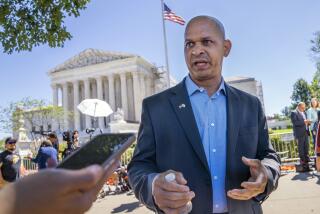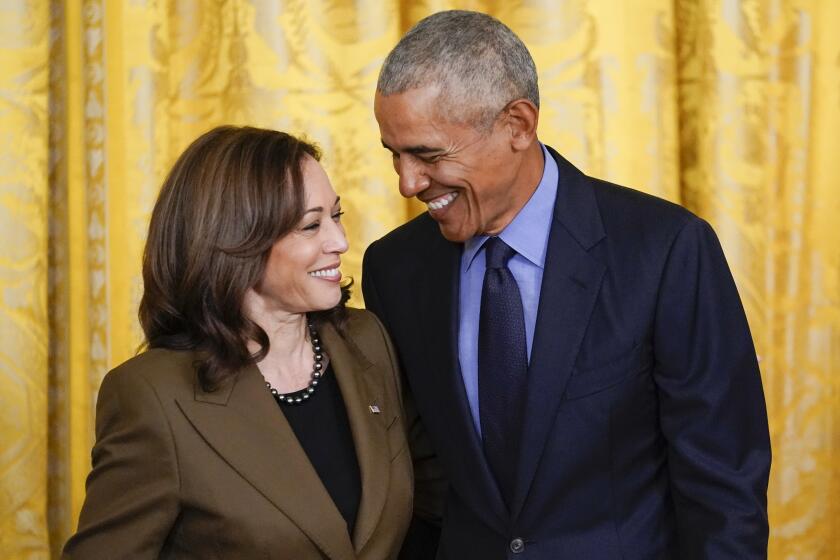5 ways parents and teachers are explaining the U.S. Capitol riot to kids

On Jan. 6, an insurrection unfolded at the U.S. Capitol when a mob stormed the building while lawmakers were voting to certify the electoral college results and Joe Bidenâs presidential election victory.
The Los Angeles Times asked parents, guardians and teachers how they are explaining the events of the day to their children and students.
Tweets and time stamps offer a timeline of the events that led to a pro-Trump mob storming the Capitol building hours after the president spoke at a rally nearby.
Below are some of the responses we received, including explanations that showcased common concerns and others that had a unique approach.
1. Be honest: This was a common thread in many of the responses.
We are honest with our son (12) and daughter (11). We explained to them that this was an insurrection incited by President Trump. The people who stormed the Capitol are traitors who wanted to overturn the election. We told them that our democracy is based on the peaceful transfer of power, and these traitors wanted to prevent that.
â Michael Lykken
2. Explain the difference between protesting and what happened at the U.S. Capitol: Another common thread seen in multiple responses.
The twins protested against police brutality this summer with us. We told them there is a big difference between having the freedom to protest when we donât like things the government is doing (First Amendment) and trying to forcibly overthrow the government, trying to take over, hurting or injuring people, etc.
So we talked about our rights as citizens (What we are guaranteed under the constitution). We talked about our duty as humans to treat people with decency and humanity, even if we disagree with them.
They witnessed and heard some pretty indelible moments, and we realize weâll be unpacking this with our children for a long time to come.
â Yndia Williams
3. Find ways to explain what happened using examples that kids can relate to.
After trying to shield my kids (ages 11 and 9) from the carnage most of Wednesday, my 9-year-old came to me before dinner and asked, âMommy, can you tell me what is going on?â I took a deep breath and told her the following: âImagine your team lost a volleyball game. The coach and your teammates thought the other team cheated, and you were robbed of a win. So, the coach rounded up you and your teammates, grabbed bats and sticks and went to the refereeâs house and started destroying it because the coach wanted the ref to change the game outcome. Thatâs what happened at the Capitol today.â My daughter looked at me and immediately said, âThatâs just stupid.â Mouths of babes.
â Michelle Sampson
Here are leading scenarios as Congress weighs punishing Trump for inciting violence: resignation, 25th Amendment, impeachment, censure, 14th Amendment, no action.
My daughter is five but very bright. I told her that there are people we ask to be leaders to run things for our country. We call them representatives or public servants. They have to take turns; so that one person doesnât get too long of a turn. We decide who is next by voting. Yesterday, one of those people (our president) was upset and didnât want to leave and asked some of the people who support him to stop the next person from getting a turn. They became violent and did not listen to the rules a.k.a. the laws. She understands violence is bad. She understands not taking turns is bad. She understands rules. She could relate to that.
â Tiya Basilio
4. Discuss how to sort through all of the information they hear and read.
We discuss how there are a lot of ideas being hurled around. We are bombarded by rhetoric and different forms of information. It can be difficult to sift through the chaff and find the truth. I try to emphasize that ultimately, we have to look hard at the issues, look hard at ourselves, and look hard at what authority figures we appeal to in order to understand the processes that we are affected by but not directly involved with. Itâs important to seek out rational, honorable people to gain information from.
Iâm open with my kids about how I donât think the events [at the U.S. Capitol] were warranted, though I know that protesting is at times more than warranted. I try to show them that I donât adhere blindly to any side. I discuss how I vote my conscience and I believe in this country and that we are not so broken that we canât accomplish necessary reforms peacefully.
â Katie Kluge
This will look like no other presidential impeachment in U.S. history. Hereâs what we know about what the next few days and weeks could look like.
5. Use the Capitol assault to bring up important related issues, in class or at home.
When school begins in LAUSD, I plan on talking to my homeroom high school students in South LA about the ways in which we can effect change through peaceful protests, voting, and education on policies that impact them. I want to talk about how we can see a huge difference in the way different races are treated as highlighted in the LA Times article. I want to talk about how fear and anger are often used by people in power to divide and motivate people. I want to talk to students about how to find reliable sources to news and events that are happening and be able to think critically and objectively as they learn more about views that are the same or different from their own views.
â Maria Kim
More to Read
Get the L.A. Times Politics newsletter
Deeply reported insights into legislation, politics and policy from Sacramento, Washington and beyond. In your inbox three times per week.
You may occasionally receive promotional content from the Los Angeles Times.














